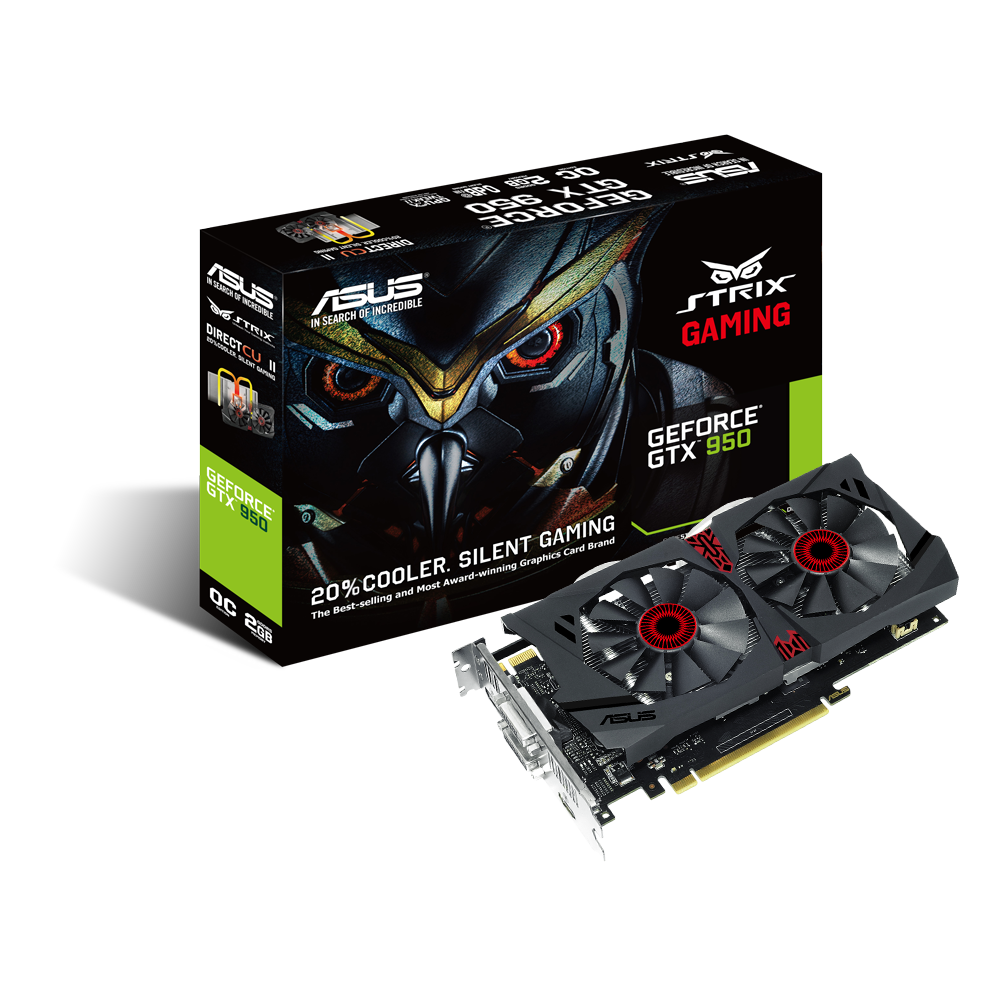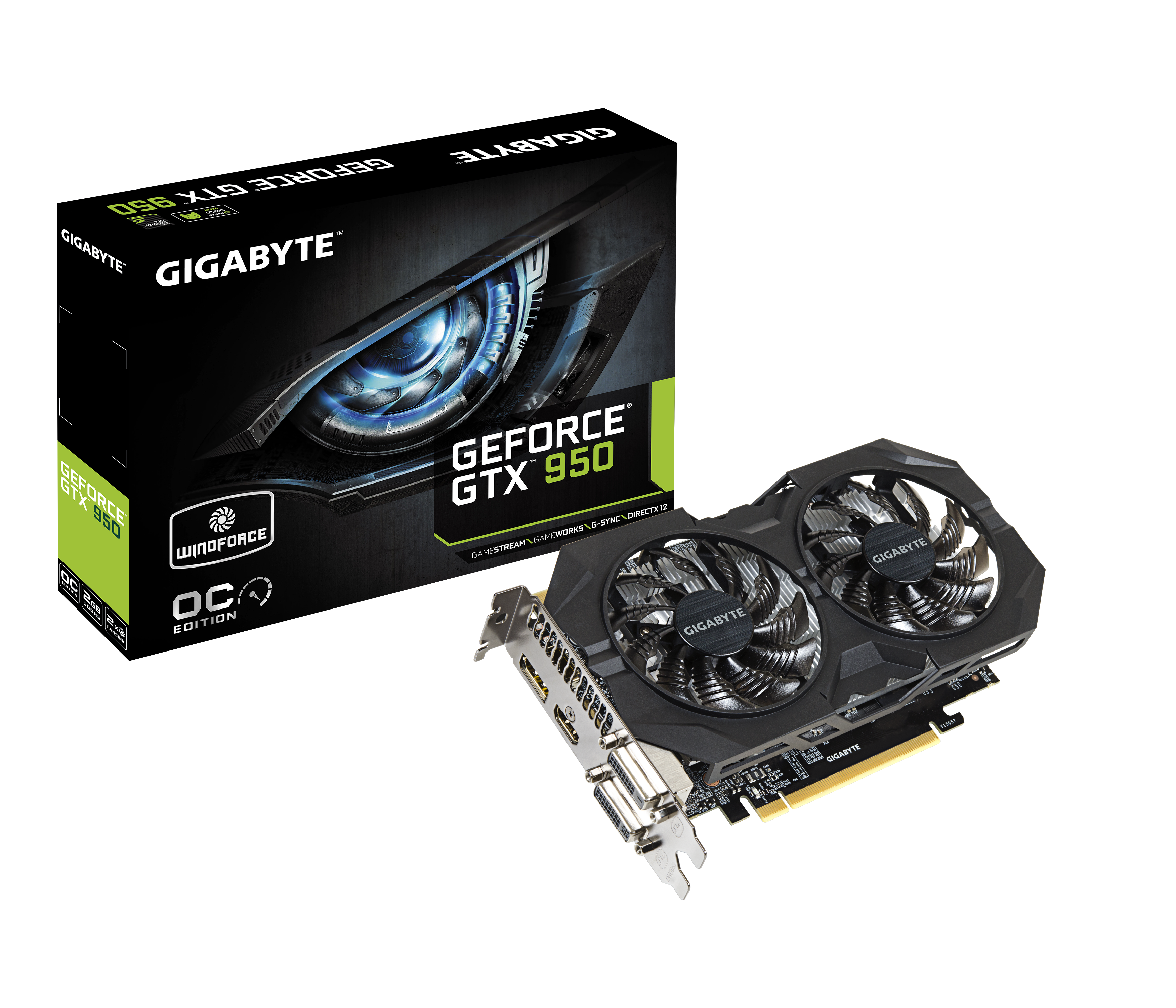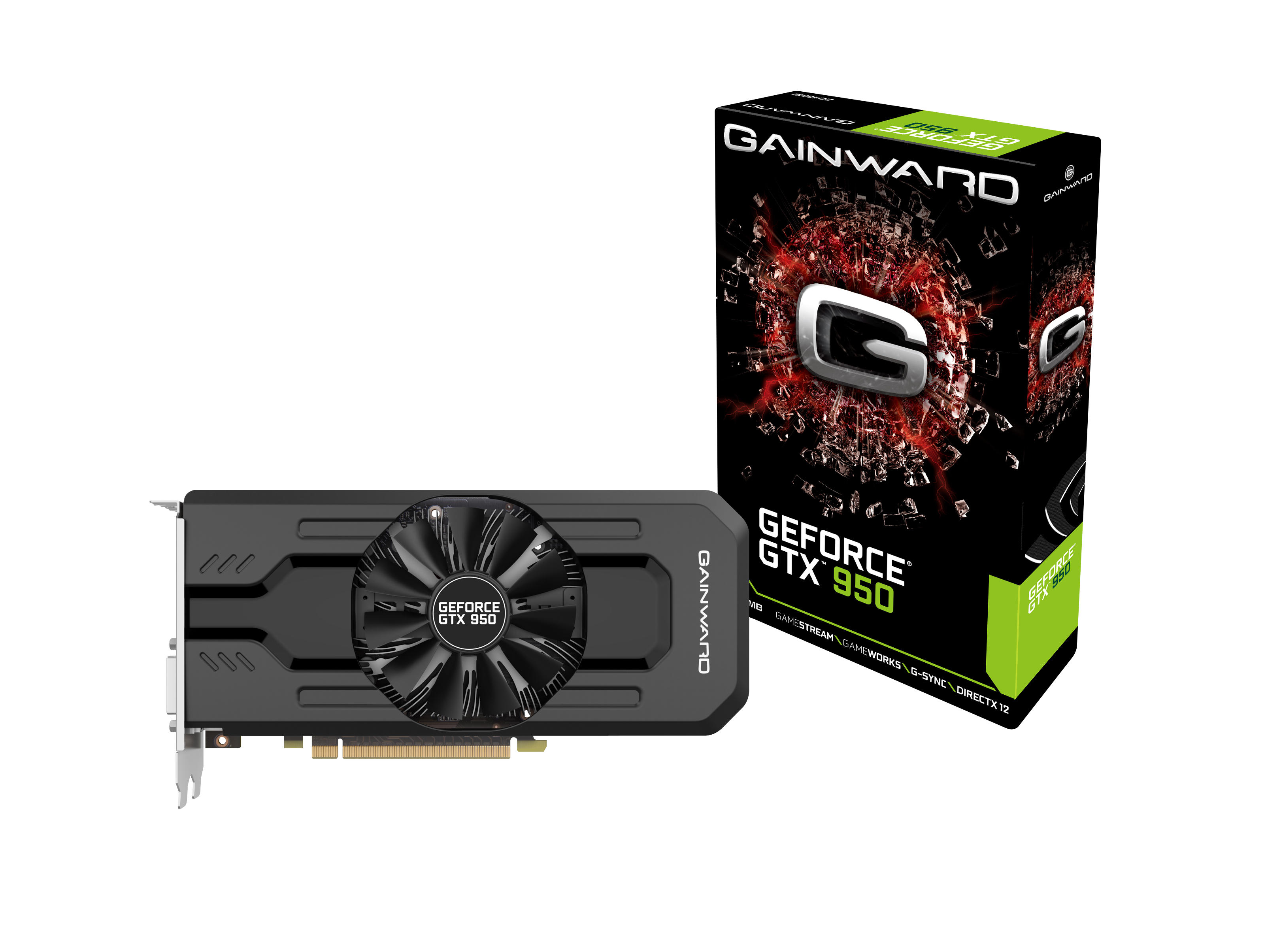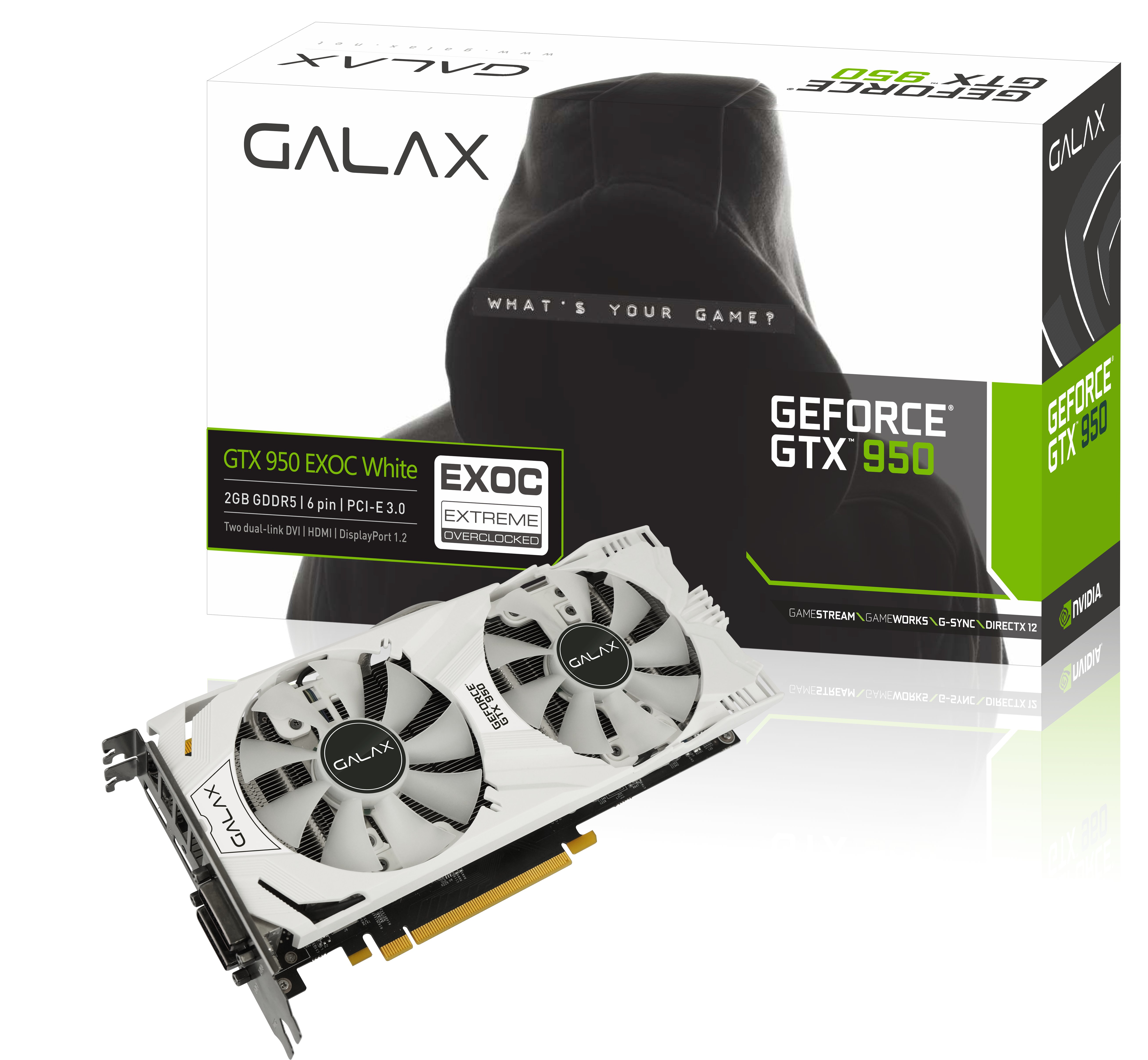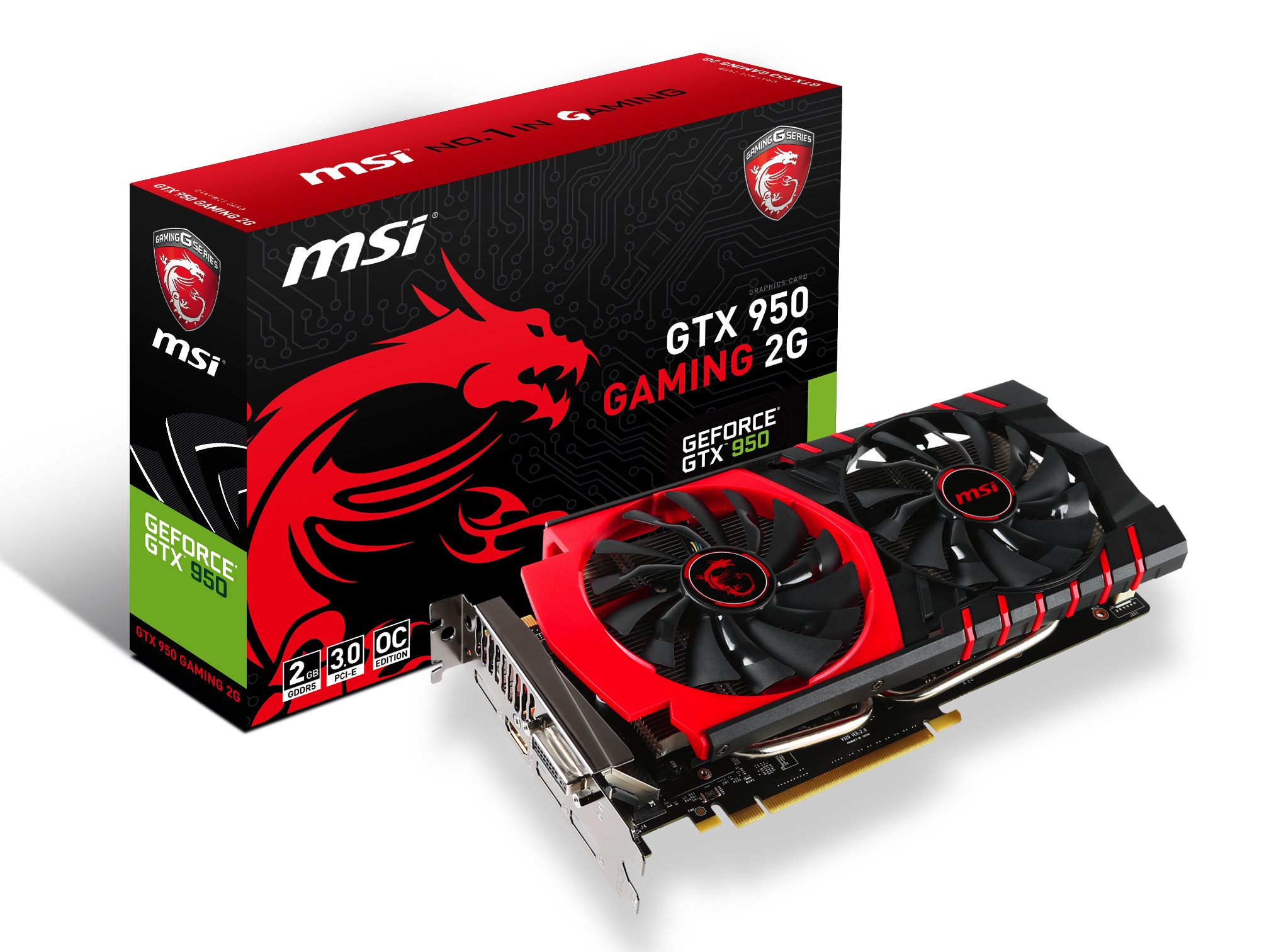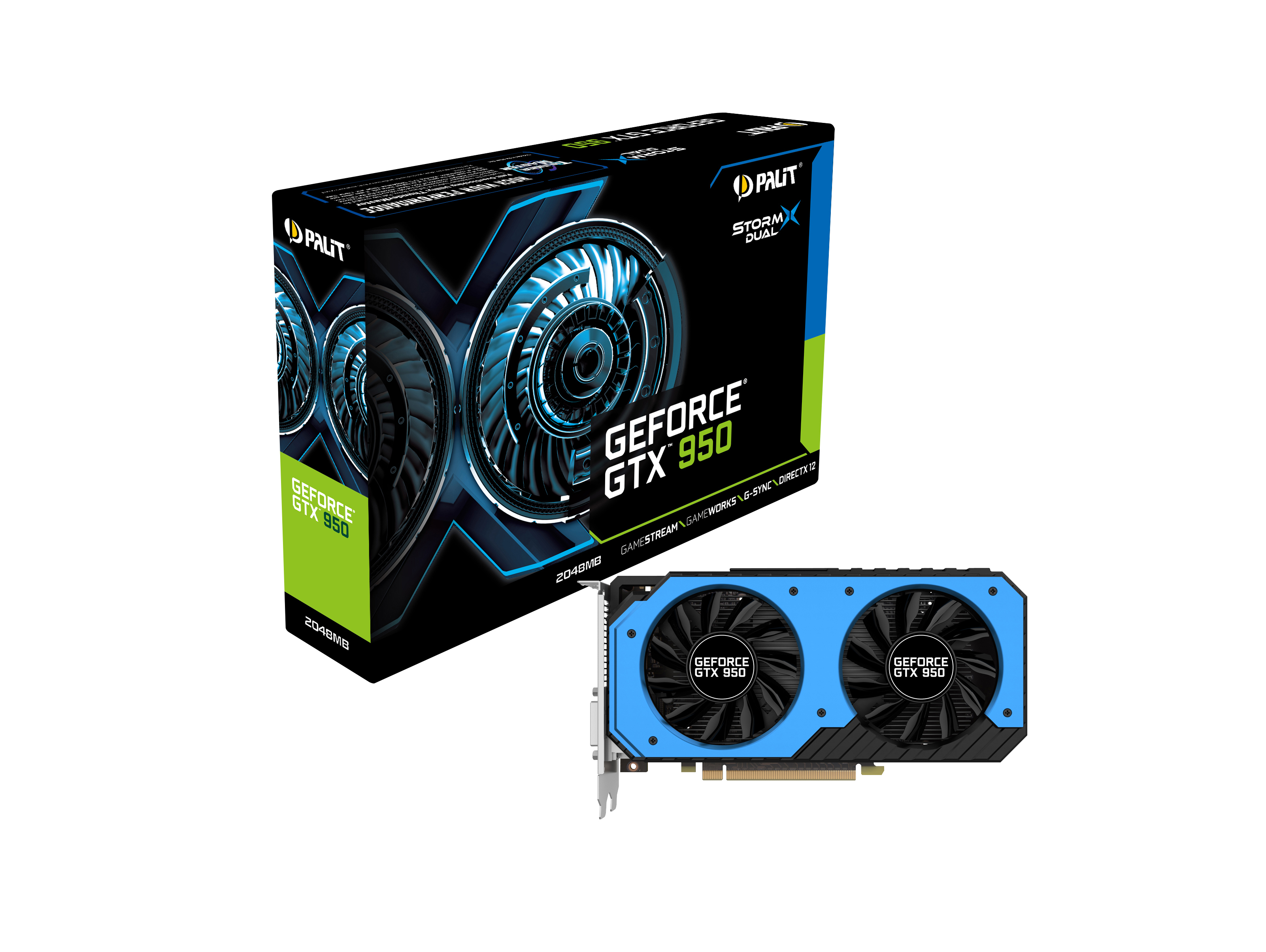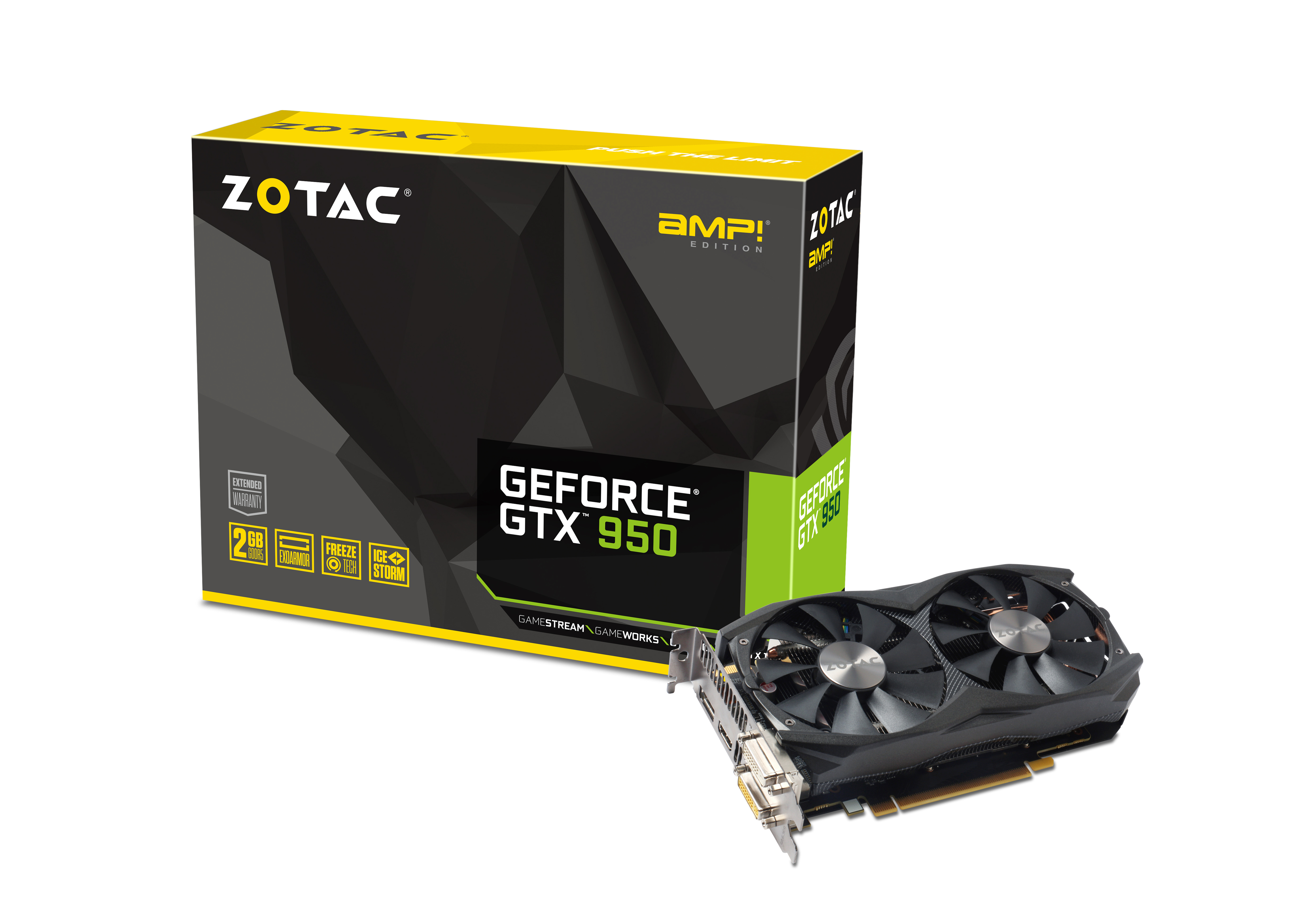Nvidia's Board Partners Bring GTX 950 To Life With 18 Graphics Cards
Today, Nvidia launched the GTX 950. We've already published our review of the card (using Asus's Strix card as a tester), but we also wanted to bring you a roundup for all the cards.
The GTX 950 is a mid-tier card that comes with 768 CUDA cores, 48 TMUs, 32 ROPs, and has a reference GPU clock of 1024 MHz and boost clock of 1188 MHz. The 2 GB of GDDR5 memory runs at 6.6 GHz over a 128-bit memory interface, and the entire package should stay relatively cool within its tiny 90 W TDP, accomplished by the GPU with its Maxwell architecture, built on a 28 nm lithographic process.
So, without further ado, here are the cards from all of the major vendors, sorted alphabetically.
Asus
Asus only has a single card in its lineup on launch, and it is the Strix GTX 950. This is the exact card that we used to review the GTX 950, which comes with a DirectCU II cooler with the new Strix styling. Some of its key features include a respectable overclock, a 0 dB fan mode that turns off the fans below a certain temperature, and a premium board design. It is also manufactured using Asus's Auto-Extreme technology, which in short is the industry's first fully-automated graphics card manufacturing process.
This card features two modes: gaming mode and OC mode. In gaming mode, the card is clocked at a boost frequency of 1329 MHz, while OC mode will bring it up to 1355 MHz.
EVGA
| Model | Base Clock | Boost Clock | Cooler | Price |
|---|---|---|---|---|
| GTX 950 SC | 1152 | 1342 | ACX 2.0 (Single-Fan) | N/A |
| GTX 950 SC+ | 1165 | 1355 | ACX 2.0 (Dual-Fan) | N/A |
| GTX 950 SSC | 1190 | 1393 | ACX 2.0 (Dual-Fan) | N/A |
| GTX 950 FTW | 1203 | 1405 | ACX 2.0 (Dual-Fan) | N/A |
EVGA's GTX 950 lineup is comprised of four different cards, each with their subtle differences. Of course, between all the variants the clock speeds are different, but that's not all there is to it. The entry-level version, for example, comes with a single-fan ACX 2.0 cooler, while the remainder of the cards come with dual-fan ACX 2.0 coolers. The top-tier "FTW" edition model even comes with a backplate, and for the "SSC" model, the backplate is optional.
Gigabyte
| Model | Base Clock | Boost Clock | Cooler | Price |
|---|---|---|---|---|
| GV-N950OC-2GD | 1064 | 1241 | Windforce (Single-Fan) | N/A |
| GV-N950WF2OC-2GD | 1102 | 1279 | Windforce 2X (Dual-Fan) | N/A |
Like many vendors, Gigabyte has two cards: a basic version with a single fan, and a more elaborate version with two fans. They both fall under the WindForce branding, and are known as the GV-N950OC-2GD and the GV-N950WF2OC-2GD, respectively. Both feature UltraDurable 2 tech, and have a unique fan blade design with special ridges.
Get Tom's Hardware's best news and in-depth reviews, straight to your inbox.
The smaller card is actually only 17 cm long, which means that it fits perfectly along the length of a Mini-ITX motherboard, making it ideal for compact builds.
Gainward
Gainward is one of the few vendors that's unveiling only a single card, but that's not necessarily a bad thing; it usually means that it's a fairly basic card, enabling lower price points. Gainward's card runs at stock frequencies of 1026 MHz at the base, and a typical boost at 1190 MHz. The cooler is a simple single-fan unit that works with a solid heatsink -- no heatpipes here.
Galax
| Model | Base Clock | Boost Clock | Cooler | Price |
|---|---|---|---|---|
| GTX 950 OC | 1114 | 1304 | Single-Fan | N/A |
| GTX 950 EX OC | 1203 | 1405 | Dual-Fan | N/A |
The weirdly named Galax (which is formerly Galaxy and KFA2, but they merged to a single brand) has two GTX 950 cards. One of the cards is a single-fan variant that uses a solid heatsink, called the GTX 950 OC, while the other is a dual-fan version that comes with white fans, a white shroud, and a heftier heatsink with multiple heatpipes. The latter version is known as the GTX 950 EX OC.
MSI
| Model | Base Clock | Boost Clock | Cooler | Price |
|---|---|---|---|---|
| GTX 950 2GD5 OC | N/A | N/A | N/A | N/A |
| GTX 950 2GD5T OC | 1076 | 1253 | Dual-Fan Armor 2X | N/A |
| GTX 950 Gaming 2G | 1127 | 1317 | Dual-Fan TwinFrozr | N/A |
For this release MSI is carrying three different graphics cards, in varying flavors. One is a simple reference card with a teeny overclock, while the other two are custom cards with a bigger and a badder overclock. The mid-tier card comes with an Armor 2X cooler, which features a white and black design, making it match perfectly with the Krait-themed motherboards. The MSI GTX 950 Gaming 2G comes with the Twin Frozr V cooler, and it has a 40 MHz memory frequency overclock.
Note that we spotted some inconsistencies in the information for the GTX 950 2GD5 OC, so we decided to leave the information out until we get verification.
Palit
| Model | Base Clock | Boost Clock | Cooler | Price |
|---|---|---|---|---|
| GTX 950 StormX Dual | 1064 | 1241 | StormX Dual (Dual-Fan) | N/A |
| GTX 950 | 1165 | 1355 | Storm X (Single-Fan) | N/A |
Palit joins the club with two cards, the GTX 950 StormX and the GTX 950 Storm X Dual. The difference between the two is, you guessed it, the one has a single fan, while the other has two. Additionally, the dual-fan model comes clocked a little higher, and the single-fan variant sits just a couple MHz (literally) off from the reference frequencies. Lastly, the StormX Dual has a 0-dB mode, where it switches off its fans below a certain operating temperature.
Zotac
| Model | Base Clock | Boost Clock | Cooler | Price |
|---|---|---|---|---|
| GTX 950 | 1089 | 1266 | Single-Fan | N/A |
| GTX 950 OC | 1102 | 1279 | Dual-Fan | N/A |
| GTX 950 AMP! | 1203 | 1405 | Dual-Fan IceStorm | N/A |
Zotac is carrying three GTX 950 cards, which range from a lightly overclocked model to a properly overclocked model. The plain GTX 950 comes with a simple cooler and a single fan, while the OC variant and AMP! Version come with dual fan coolers, with the top-of-the-line AMP! version's IceStorm cooler featuring a "Carbon Exoarmor," which includes a backplate. All three coolers feature the so-called "FREEZE" tech, which simply turns off the fans below a certain temperature threshold.
Aside from Asus's Strix card, we weren't provided MSRP pricing information for any of the cards. Of course, use your reasonable judgement when making a purchasing decision. Nvidia's suggested price for the GTX 950 is $159, so if you're paying more than that, be sure that you're getting a nice overclock and cooler for your money.
Follow us @tomshardware, on Facebook and on Google+.
Niels Broekhuijsen is a Contributing Writer for Tom's Hardware US. He reviews cases, water cooling and pc builds.
-
turkey3_scratch Awesome! Glad we got the full details of all 18 cards now. Once again to me, EVGA seems like the brand I'm going to go to if I purchase a 950. I love how the Superclocked version is always small and can fit in Mini ITX builds. EVGA cards have high clock rates also when compared to the other brands. The Gainward card looks weird to me with the one fan design. But I'm curious to see the prices, as that's a very important factor in deciding which to purchase.Reply
I know you can OC all those cards, too. But some people don't delve into overclocking because they don't like messing with voltages or are inexperienced, in which EVGA is an attractive brand with higher clock rates. I'm curious if the EVGA version will need a 6-pin power cable, as their 750Ti SC does not and the 950 draws in less power. It could very well run on pure PCIex16 power, as well as some other cards if they take advantage of the low power draw properly. -
TechyInAZ Nice! Love the selection there! Excellent factory overclocks as well, 1400mhz on the FTW model is very impressive!Reply
All the cards look great! My personal favorites are the EVGA, Gigabyte, and MSI versions.
I wish EVGA would allow me to trade in my 750 TI FTW for a 950 FTW. :( -
UltimateDeep I'm hoping that board partners can shrink it down even shorter (and cuter) like what they did to the GTX 650 (The EVGA 650 looks damn cute) and the 750 Ti.Reply -
ko888 The EVGA GeForce GTX 950 SC does require one 6-pin PCI-E power connector because its average power consumption is in the 95 Watt range. It's only 0.1 inches or 2.54 mm longer than the EVGA GeForce GTX 750 Ti SC.Reply
https://www.evga.com/products/images/gallery/02G-P4-2951-KR_XL_1.jpg -
pheroklendathu I had a feeling the prices on these cards would be at this price point, so I went ahead and got an EVGA GTX 960 SSC earlier this week. I read today's review of the 950, and it sounds great, but I just don't see why somebody wouldn't pay the extra $15 to get a 960 (and it came with MGS V for free with it).Reply -
amk-aka-Phantom Why are all these cards regular-sized and mostly with two fans? My single-fan Asus GTX 970 Mini is much more powerful yet occupies half the space...Reply -
knowom ReplyI had a feeling the prices on these cards would be at this price point, so I went ahead and got an EVGA GTX 960 SSC earlier this week. I read today's review of the 950, and it sounds great, but I just don't see why somebody wouldn't pay the extra $15 to get a 960 (and it came with MGS V for free with it).
Yeah these are priced too high for what they are you might as well get the GTX960 2GB version instead or pay a bit more for the 4GB version just get them on sale for 175/200 they'll be hitting those price targets routinely I think at this point on and off. -
RedJaron There is no reason to get a 4GB 960. The card simply doesn't have the power or the memory pipe to deal with detail settings that want 4GB. If you're spending extra on the 4GB version, you're better off hunting down a 280X.Reply
Also realize you're comparing prices between a card that was just released and one that's got many online deals and specials. Outside of those sales, the 960 tends to hover around $190 - $200, meaning it's usually a $30 gap. Considering you can OC the 950 to within spitting distance of an OCd 960, that $30 could be big in a small budget. -
TechyInAZ Let me get some facts answered:Reply
1. Maxwells memory compression algorithms allows Maxwell to use 4GB no problem. Just look at the benchmarks. However, it's only beneficial if you do SLI.
2. The bigger beefy coolers allows better overclocking, and looks cooler. :D
3. The GTX 950 is 90 WATTS! A 6 pin power connector is a MUST!
